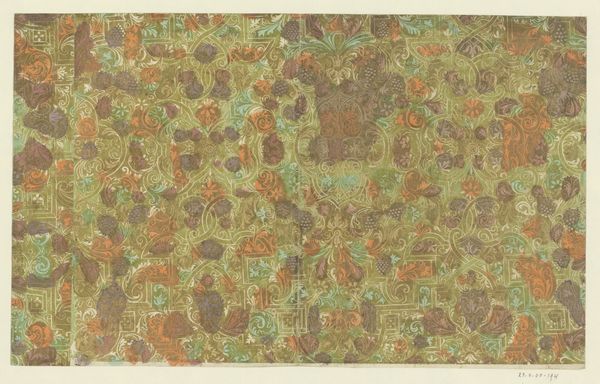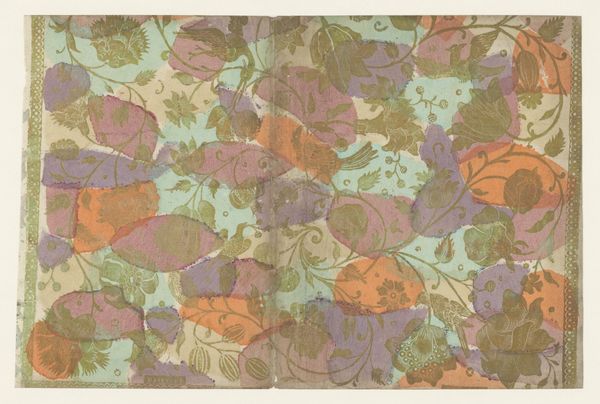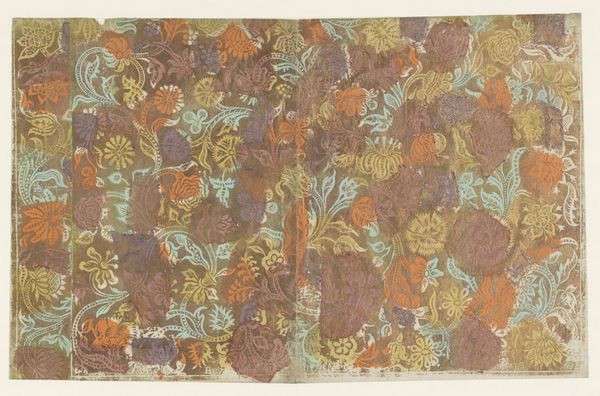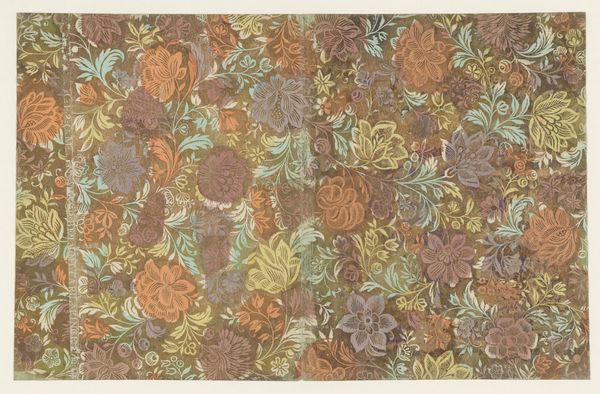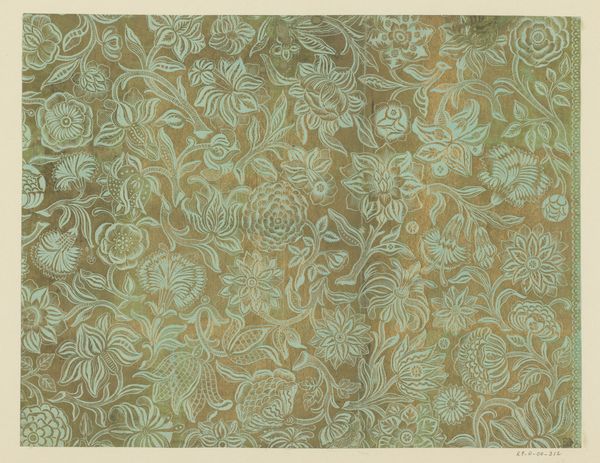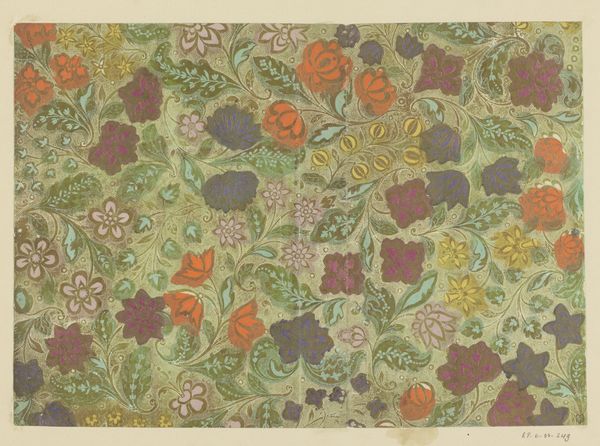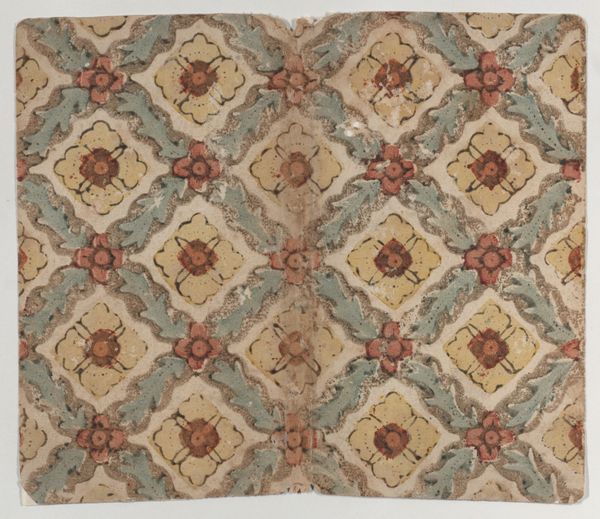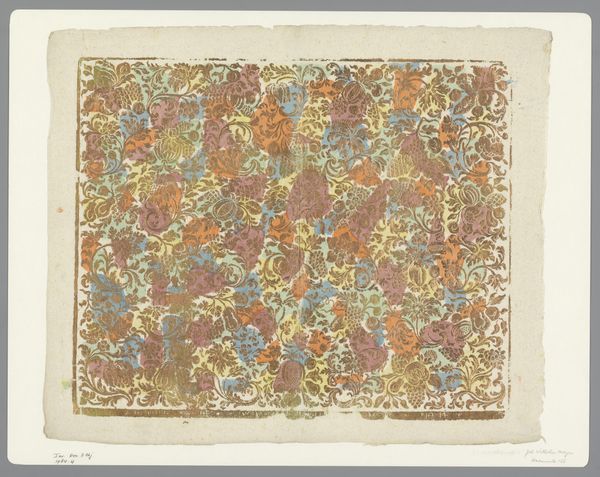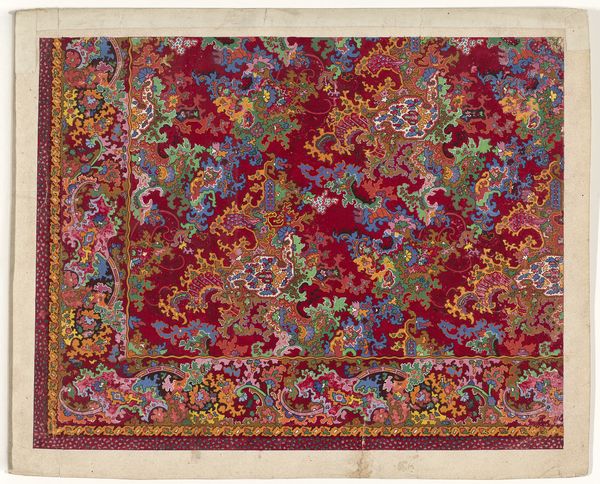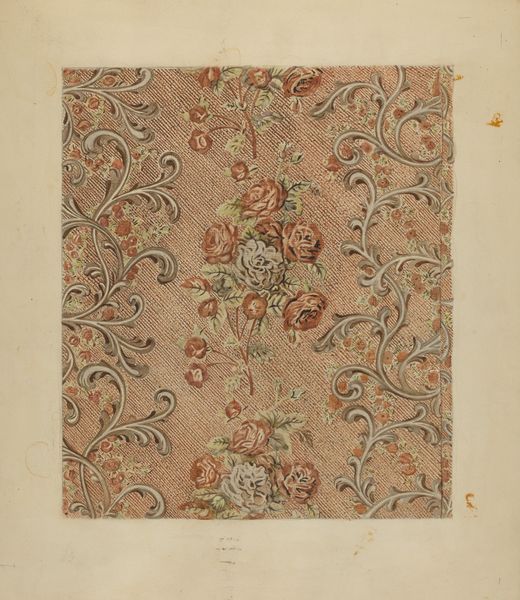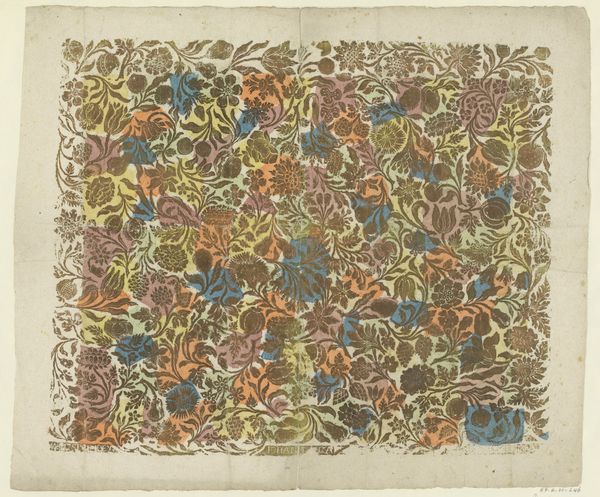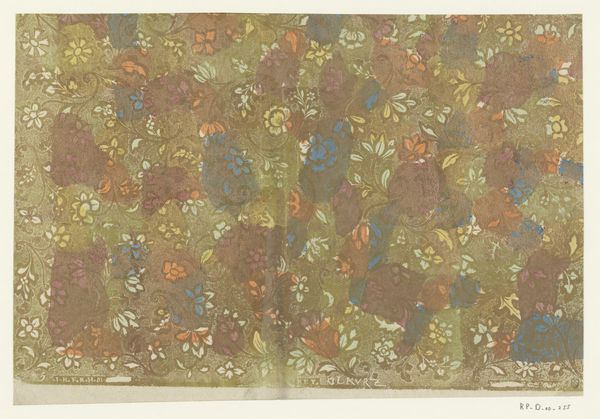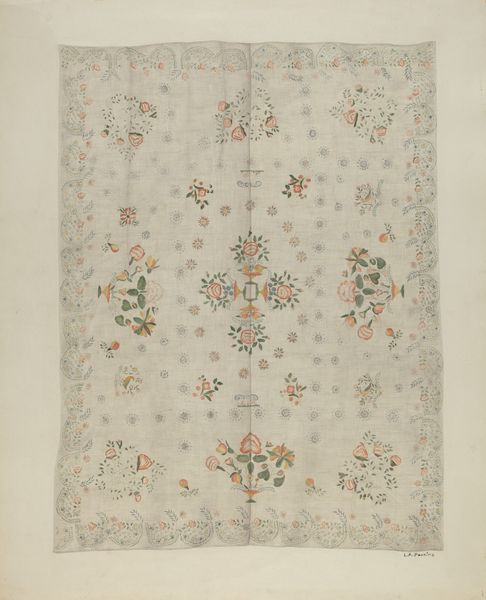
print, woodcut
# print
#
figuration
#
folk-art
#
woodcut
#
genre-painting
#
decorative-art
Dimensions: height 322 mm, width 395 mm
Copyright: Rijks Museum: Open Domain
Curator: This is "Blad met dieren," or "Sheet with animals," a woodcut print dating from between 1750 and 1794. The artist is Johann Carl Munck. Editor: It's… charmingly chaotic! There's this riot of color and shape. I can't immediately pin down a focal point. Curator: Indeed. Munck's woodcut blends folk art traditions with decorative sensibilities. It's a testament to the period’s growing fascination with genre painting. What stories do you think this sheet attempts to capture? Editor: To me, it screams "labor." Just envision the physical act of carving that woodblock to produce the image. The time and precision needed! What about the source of these raw materials for printmaking, though? Where are they extracted and how does that extraction shape class structures and global exchanges? Curator: A fascinating perspective! Looking at the imagery itself, this work could’ve been intended for popular consumption, to disseminate moral narratives throughout households via a cheap but evocative visual medium. The proliferation of such imagery surely played a role in shaping popular perceptions of the era. Editor: Yes, and perhaps each repeated animal form denotes efficiency. Munck used the material capacities of the block and print for an easy decorative statement, while reducing production cost. But there’s also, a unique texture. Does it remind you of handmade textiles in its look and feel? Curator: Certainly! The style nods toward textiles, evoking comfort and familiarity, all the while being presented as an affordable piece of decorative artwork for home adornment. This kind of blending of visual vernacular became popular during the era and had a large effect on consumerism. Editor: Seeing it this way transforms my understanding of Munck's technique. His labor becomes central—the choosing, preparing, and printing. Every step involved shaping a consumer object and all that its circulation represented during a given time period. Curator: It reveals an undercurrent to even ostensibly quaint domestic decorations! By contextualizing the labor involved in the artwork, it takes on renewed value and symbolism within the cultural climate it came from. Editor: Well, I for one have a deeper respect for what print production in the 18th century demanded. Curator: Agreed! Understanding this piece through the socio-political lens brings awareness to the impact that popular art held.
Comments
No comments
Be the first to comment and join the conversation on the ultimate creative platform.
